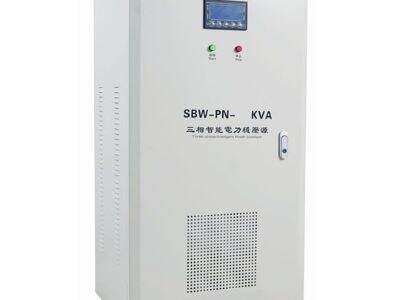Pad Mounted Transformers are unique pieces of equipment and we can say that they are the backbone of the electrical supply to many locations such as our homes, schools, hospitals, offices, etc. These units help us make sure that we have sufficient energy for electric lighting, heating, and powering of other electrical devices. But like any other piece of equipment, Pad Mounted Transformers at times encounter problems that affect their efficiency. Common Pad Mounted Transformer Issues & How to Fix Them Will allow us to continue using the electricity they produce, and our lives go on as usual.
Locating Leaky Connections in Pad Mounted Transformers
Poor connections are among the most frequent issues that Pad Mounted Transformers can suffer from. This happens when the cables that connect to the transformer loosen, rust, or even break over time. When the connections are not firm, the transformer will be starved of power, and make the operation below par. The transformer in other instances may completely shut down, and this can be very inconvenient.
Begin at the transformer and check the connections of the wires to it for the poor connections. Check for wear, damage, or rust. If you see any of these indications, you need to act. You can tighten that connections to use them securely. If you see any damage, replace them right away. You can also remove rust if you see it with a wire brush or sandpaper. Following these steps is crucial for the transformer to function effectively so that you can get enough power to illuminate your bulbs and operate your household appliances without any issues.
How to check for overheating transformers
Overheating is also a common problem with Pad Mounted Transformers. Thermal overload may be caused by a few reasons. It may also result if excessive work is being performed by the transformer and it is overloaded with electricity load. It may also result if there is something wrong with the insulation, which is the material that contains the electricity. If a transformer overheats, it can get damaged and, if not treated promptly, can even become a fire hazard.
A simple step to test overheating would be to test the oil level within the transformer. The oil will cool it off and keep the transformer running perfectly. If you are low in oil, then simply begin topping off with more oil to drop the temperature. The second thing to do would be to try feeling the heat of the transformer; if you can feel heat, then most definitely you have to do something. There are fans or other cooling appliances you can utilize to assist with that.
This may involve shedding some of the power load off on other transformers, if you are experiencing that the transformer you are working on is carrying too much load. It will also help in averting overheating by ensuring that no single transformer is overloaded by excessive load. These steps will ensure that you are confident your transformer is in the best it can be condition and safe to boot.
Detection of Low Voltage Problems in Pad Mounted Transformers
Another significant issue that occasionally arises while using Pad Mounted Transformers is low voltage. It refers to the transformer failing to generate sufficient electric where you can notice it as faint lights, sluggish and unresponsive electronics. Low voltage may be triggered by a variety of factors, such as outdated transformers, loose connections, or current imbalance on the transformer.
Checking voltage output of the transformer is the initial step to repair low voltage issues. Please Also Check the Connections If Voltage is Low If Voltage is Low, Then You Must Check The Connections Whether It is Loose Or Rusted Check for issues and if you find any, get them sorted out. You can also use a tool called a load tester to check whether the load on the transformer is balanced. If note, load is unbalanced, shift some of the load to other transformers to rectify the situation and maintain smooth running.
Proper Grounding of the Transformer
Another very important step of troubleshooting Pad Mounted Transformers is to make sure they are grounded. The act of wiring the transformer neutral connections to the ground is grounding. It is, however, a safety measure that shields the transformer, as well as people consuming electricity. Without proper grounding, a transformer can be a safety risk for both the transformer and the environment, with possible problems with performance as well.
To have the electric transformers properly grounded, you will start by checking on the grounding wires. See that they are okay and free from anything that would harm them. You may even test for resistance of earth to see if it is higher than a safe range. For instance, if the resistance is too much, you can insert one or more grounding rods to enhance the conductivity. Simple DIY Guide As mentioned earlier, it is always the best strategy to contact a professional electrician in the case of repairing a Pad Mounted Transformers problem. However, there are some small problems you can repair yourself. For instance,transform you can look and determine whether or not there are blown fuses in the transformer. In case you do have a blown fuse, it is useful and effective to replace it as it cuts off or otherwise restricts the flow of electricity. In addition, you can tighten loose connections and remove any rust you notice on transformers in order to get them running more effectively. In summary, Pad Mounted Transformers are devices capable of generating electricity used to supply power to our houses, schools, hospitals, and workplaces. Being machines, things do not always go smoothly. These might range from bad contacts, heating, and an inability of electric power to flow in enough, producing inadequate voltage. You will be able to tell these problems apart and be able to resolve them using knowledge gained from the guideline. This information guarantees that the transformers function efficiently and smoothly, guaranteeing our requirement to be satisfied with electricity.

 EN
EN
 AR
AR
 BG
BG
 HR
HR
 CS
CS
 DA
DA
 NL
NL
 FI
FI
 FR
FR
 DE
DE
 EL
EL
 HI
HI
 IT
IT
 JA
JA
 KO
KO
 NO
NO
 PL
PL
 PT
PT
 RO
RO
 RU
RU
 ES
ES
 SV
SV
 TL
TL
 IW
IW
 ID
ID
 LT
LT
 SR
SR
 SK
SK
 SL
SL
 UK
UK
 VI
VI
 SQ
SQ
 ET
ET
 GL
GL
 HU
HU
 TH
TH
 TR
TR
 FA
FA
 MS
MS
 BN
BN

